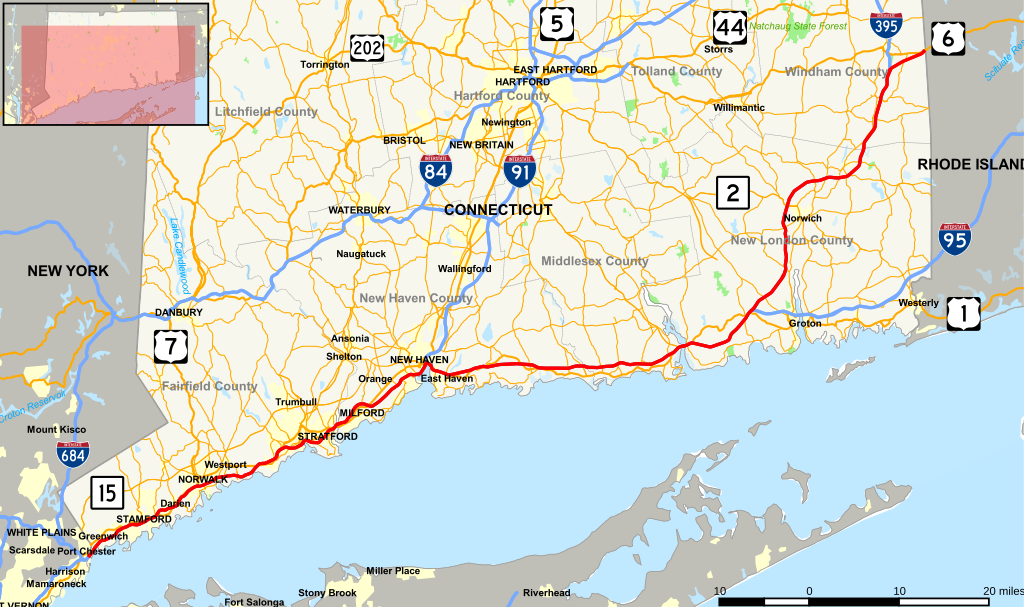On January 2, 1958, Governor Abraham Ribicoff officially opened the Connecticut Turnpike—today the Governor John Davis Lodge Turnpike—to traffic. Ten months later, the last three miles, including the bridges over the Mianus and Byram rivers, opened connecting the Stamford area to the New England Thruway. At the time of construction the Connecticut Turnpike was the longest urban highway in the country.
Dating back to colonial times, the Boston Post Road served as the main overland route linking New York to Boston. Changes in transportation and the pressures of more modern traffic demands, however, necessitated the construction of a new travel route. In 1954, the Connecticut state legislature authorized the construction of a 129-mile long highway, the “Greenwich-Killingly Expressway,” to connect New York to Rhode Island. This new route was to run east along Long Island Sound from Greenwich to East Lyme, then northeast to Killingly. Construction on the renamed Connecticut Turnpike began on January 17, 1955. Designed for speeds of up to 60 miles an hour, this modern highway spanned four to six lanes and was built in just three years at a cost of $464 million dollars.
In 1956 the federal government began funding a national system of interstate highways. After the Connecticut Turnpike opened, most of it became part of this new national system—approved by the Bureau of Public Roads on August 21, 1957, and designated as Interstate 95 from New York to East Lyme and then Interstate 395 from East Lyme to Plainfield.
Tolls and concession income from the 14 service areas that lined the route covered the construction costs for the Connecticut Turnpike. It opened with toll barrier systems in place at Greenwich, Norwalk, Stratford, West Haven, Branford, Madison, Montville, and Plainfield. The original passenger car toll for the entire 129-mile route was $2.10, but the congestion and inconvenience caused by frequent stops at toll booths helped initiate a successful movement to abolish them. The era of toll collection came to a close on the Connecticut Turnpike in 1985.









